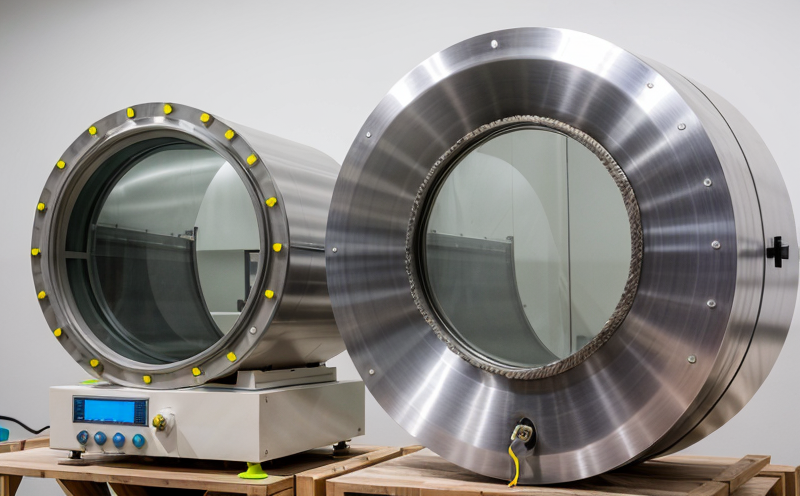ISO 22971 Composite Shielding Material Characterization
The ISO 22971 standard provides a comprehensive framework for characterizing composite materials used in radiation shielding applications. This service is critical for ensuring the reliability and effectiveness of these materials across various sectors, including medical, aerospace, nuclear energy, and defense industries.
Composite materials are increasingly favored due to their superior properties such as high strength-to-weight ratios and excellent resistance to radiation damage. However, their complex structure can make it challenging to accurately characterize them using conventional methods. ISO 22971 addresses this by offering a standardized approach that ensures consistent results across different laboratories and test facilities.
The testing process involves several key steps: specimen preparation, exposure to gamma or neutron sources, measurement of attenuation, and analysis of the resulting data. Specimens are typically prepared from commercially available composite materials, which may include carbon fiber-reinforced polymers (CFRP), boron carbide (B4C), and other advanced ceramics.
The primary goal is to determine how effectively these materials absorb radiation, thereby protecting personnel and equipment from harmful exposure. This involves measuring the attenuation coefficient, density, and other relevant physical properties of the composite material under controlled conditions. The results are compared against established benchmarks and industry standards to ensure compliance with safety regulations.
By adhering strictly to ISO 22971, we provide our clients with accurate, reproducible data that can be used to optimize design parameters, improve product performance, and enhance overall safety. Our team of experts ensures every test is conducted using state-of-the-art equipment and methodologies, ensuring the highest level of accuracy.
The importance of this service cannot be overstated, particularly in industries where personnel are frequently exposed to ionizing radiation. Accurate characterization allows manufacturers to select the most appropriate materials for specific applications, reducing the risk of exposure while maintaining operational efficiency.
Why It Matters
The need for accurate composite shielding material characterization is paramount in ensuring safety and compliance with international standards. In sectors such as healthcare, where radiation therapy treatments are administered, it’s crucial to have materials that provide optimal protection without compromising treatment efficacy.
In aerospace applications, where lightweight yet robust materials are essential, the correct choice of shielding can significantly impact aircraft weight and fuel efficiency. Similarly, in nuclear energy facilities, accurate characterization ensures that the materials used in reactor containment structures meet stringent safety requirements.
The reliability of composite materials is also vital for defense applications, where advanced shielding can protect personnel from hostile environments. By adhering to ISO 22971, we ensure that our clients are using materials that have been rigorously tested and proven effective in real-world scenarios.
Benefits
- Enhanced Safety: Accurate characterization ensures that the materials used provide optimal radiation protection, reducing risks to personnel and equipment.
- Regulatory Compliance: Adherence to ISO standards guarantees that the tested materials meet all relevant regulatory requirements.
- Improved Product Performance: By selecting the most effective shielding materials, manufacturers can optimize product performance while maintaining safety standards.
- Cost Efficiency: Accurate testing helps avoid costly errors and rework by ensuring that the correct materials are selected from the outset.
The benefits extend beyond just compliance; they contribute to safer working environments and more reliable products. This is especially important in sectors where personnel exposure to ionizing radiation cannot be avoided, such as in medical imaging or nuclear reactor maintenance.





